Tibet
Otto Rahn y la Búsqueda Nazi por el Secreto de los Cátaros
La Berlin de entreguerras era una ciudad conocida en toda Europa por su sub-cultura bohemia y sus jovenes intelectuales. Entre los personajes que ardientemente celebraban los abundantes «ismos» que estaban fracturando las viejas certezas ideologicas, las cuales habian compactado el siglo XIX, pocos individuos eran mas coloridos que un joven de ojos verdes y cabellos oscuros llamado Otto Rahn. Su figura delgada, envuelta en un caracteristico abrigo negro y sombrero tiroles, arrojaba una larga sombra desde esos anos sombrios, una «gran silueta» alrededor de la cual se han acumulado los mitos mas extravagantes. El fue considerado igualmente como mason, rosacruz, luciferino, y un agente de la Sociedad Thule. Como lo plantea el autor Phillip Kerr, los contemporaneos de Rahn no se habrian sorprendido de ver «la Dama Escarlata y la Gran Bestia salir volando desde la puerta del frente» de su apartamento en Tiergartenstrasse. Uno de sus companeros de la Orden Negra de Heinrich Himmler comento en un memorandum interno que el «medio sospechaba que Rahn tenia relaciones con el pueblo pequeno».
В поисках утраченного Грааля
Берлин между мировыми войнами был городом, известным по всей Европе своей богемной субкультурой молодых интеллектуалов. Среди лиц, которые горячо обсуждали много модернистских "измов", которые ломали старые идеологические определения, что склеивали 19-ое столетие, немногие были более колоритными, чем этот темноволосый, зеленоглазый молодой человек по имени Отто Вильгельм Ран. Его худая фигура, одетая в характерный черный плащ и фетровую шляпу, бросает длинную тень из тех сумеречных лет, ‘великий силуэт’, вокруг которого вращались самые невероятные мифы. Он, как говорили, был Масоном, Розенкрейцером, Люциферианцем, посланцем Общества Туле, посвященным Катаром и даже руководителем некоего неизвестного международного тайного общества.
Otto Rahn: author, poet, Grail seeker, SS officer
In February 2007, Montserrat Rico Góngora published “The Desecrated Abbey”, in which he claimed that Heinrich Himmler, Hitler’s second-in-command and head of the Nazi SS, had made a secret wartime mission to an abbey in Spain, in search of the Holy Grail. Góngora even interviewed Andreu Ripol Noble, a former monk and the only person that spoke German, who was ordered by his superiors to guide Himmler during the visit in 1940. Ripol related that Himmler came to Montserrat inspired by Richard Wagner’s opera “Parsifal”, which mentions that the Holy Grail could be kept in “the marvellous castle of Montsalvat in the Pyrenees” – the mountain range that marks the border between France and Spain.
Otto Rahn im Wikipedia
Otto Wilhelm Rahn (* 18. Februar 1904 in Michelstadt im Odenwald; † 13./14. März 1939 bei Söll (Tirol), Österreich) war ein deutscher Schriftsteller, Mediävist und Ariosoph,[1] der sich mit dem Gralsmythos beschäftigte.
Leben
Schule und Studium
Rahn wurde 1904 in Michelstadt/Odenwald als erstes Kind des Justizamtmanns Karl und Clara Rahn (geb. Hamburger) geboren. Ab 1910 besuchte er das humanistische Gymnasium erst in Bingen, wo er bis zum Beginn des Ersten Weltkriegs lebte. Sein Abitur machte er in Gießen. Dort begeisterte ihn sein Religionslehrer Freiherr von Gall erstmals für die Geschichte der Katharer. 1922 begann Rahn ein Jurastudium in Gießen, das er an der Albert-Ludwigs-Universität Freiburg und der Universität Heidelberg fortsetzte. 1925 bis 1928 unterbrach er sein Jurastudium und betätigte sich als Handelsreisender für verschiedene Verlage.
Prologo de Cruzada contra el Grial, La lucha entre Cátaros, Templarios y la iglesia de Roma
Wolfram von Eschenbach nos informa que Kyot, "el famoso Maestro", trajo a suelo germano la verdadera leyenda del Graal desde la Provenza; y que Chrétien de Troyes (el autor del Parsifal galo, o el Conde del Graal) la modificó. Si bien es cierto que no existe poema épico alguno acerca del Graal escrito por "Kyot", sabemos que a finales del siglo XII un poeta francés de la Provenza de nombre Guyot recorría las cortes más renombradas del norte y sur de Francia; y que entre sus poemas se encontraba una "Biblia" en la que caricaturizaba a sus contemporáneos. Resulta posible atribuir a este Guyot una versión del Parsifal que jamás llegó a nuestras manos.
The wooden book of Montségur
In the early 20th century, a series of palm leaves, containing anomalous writing, were apparently discovered within a hidden cache of the walls of the Cathar castle of Montségur. Though without any intrinsic value, the “wooden book” – as it became known – would become the centrepiece of the esoteric and metaphysical community; its discoverers even labelled it “the Oracle” and said it was able to contact the hidden masters of Agharta.
Montségur is seen as the final stronghold of the Cathar faith, a bastion of true devotion besieged by the worldly ambitions of the papal troops. In March 1244, the Cathars that had been locked inside the castle for months finally surrendered; approximately 220 were burned en masse in a bonfire at the foot of the pog when they refused to renounce their convictions.
English translator's foreword to Crusade Against the Grail
WHEN URBAN VERLAG IN FREIBURG published the first edition of Crusade Against the Grail [Kreuzzug gegen den Gral] in 1933, the book was not an immediate bestseller. But its eloquence deeply moved those who read it. One so moved was Albert H. Rausch, the 1933 Georg Biichner prizewinner who published under the pseudonym Henry Benrath. Rausch wrote an introduction for the book called Kreuz und Gral [Cross and Grail], which eventually appeared in the Baseler Nachrichten later in the year.
Otto Rahn Biography
CHRONOLOGY 1904-1939
18 Feb 1904 Otto Rahn born, Michelstadt. Parents Karl & Clara (nee Hamburger)
1910-1916 Junior school at Bigen
1916-21 Secondary school at GrieBen
1922 obtains Baccalaureat
1924 obtains Bachelor in Philology and History
1930 Rahn begins his European travels (Paris, Provence, Switzerland,
Catalonia, Italy)
1931 Rahn visits French Pyrenees. Visits "Spion" in Pyrenees with Himmler and Abetz
1932 Rahn leads a Polaires expedition in Pyrenees
13.12.33 Rahn joins the German Writers Association
1934 publishes "Kreuzzug gegen Gral" (Crusade against the Grail)
1935 appointed to personal staff of Heinrich Himmler
29.2.36 Rahn joins Allgemeine-SS, member 276 208
1936 Rahn visits Iceland with 20 men
1937 publishes "Luzifers Hofgesind. Eine Reise zu denguten Gelstern Europa" (Lucifer's Court in Europe; Rahn sent back to Languedoc (Montsegur), says he will return in 1939. Time of alleged Corbieres visit?
20.4.37 promoted to sub-lieutenant (Untersturmfuhrer)
Sep-Dec1937 military service for "disciplinary reasons" at Oberbayern Regiment, Dachau<
Otto Rahn – Otto Skorzeny Raiders of the Found Ark?
The founders of the Third Reich were esoterically involved with matters which unavoidably skirt the mysteries associated with the valley of Rennes-le-Chateau. Their interests were not however, confined to the ephemeral, there is evidence of the tenacity with which they pursued the material associations of the valley. Many assorted books on Rennes-le-Chateau mention that a battalion of German mining engineers made excavations in the area during World War Two.
Holy Grail
Since the publication of The Da Vinci Code the debate rages as to what and where the true Holy Grail exists
Taken as a whole, the various renditions of the Holy Grail legend, whether they derive from Europe or Asia, imply that there are many forms that the Holy Grail can take.
These legends assert that the Holy Grail can be anything from the platter mentioned by Chrétien de Troyes, the first author of the Holy Grail legend, to the Cup of Christ alluded to by Robert de Boron, or even the Stone of Heaven mentioned by Wolfram von Eschenbach in Parzival.


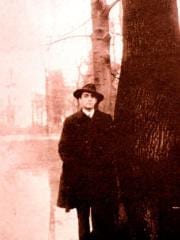

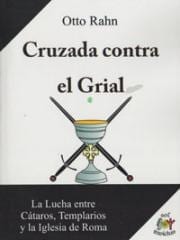
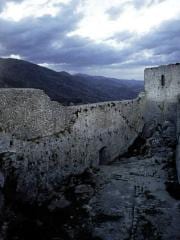
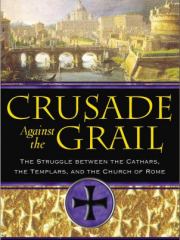
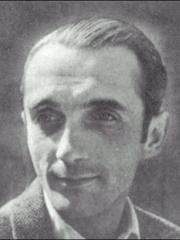
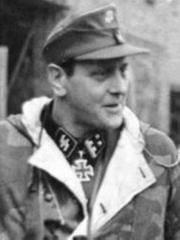
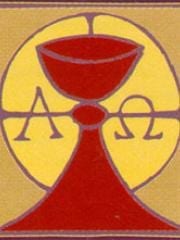
Последние комментарии
13 лет 18 недель назад
13 лет 18 недель назад
13 лет 18 недель назад
13 лет 18 недель назад
13 лет 21 неделя назад
13 лет 27 недель назад